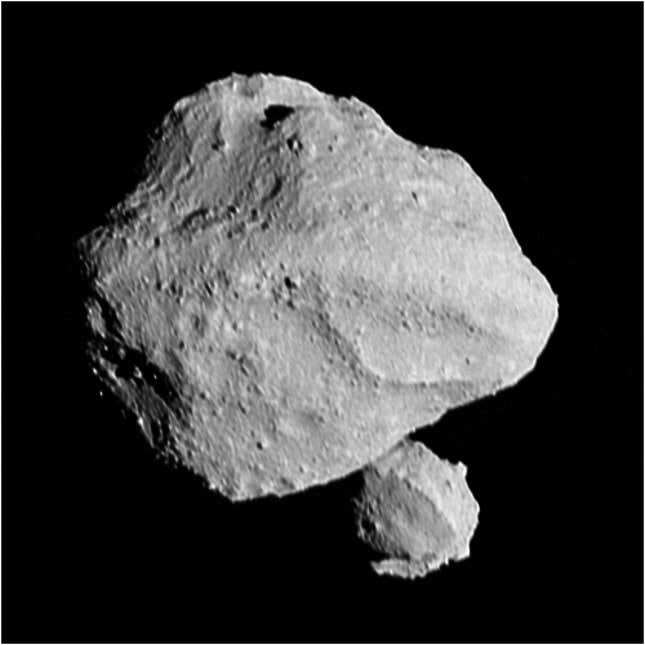As NASA’s Lucy spacecraft zoomed past its first asteroid on Wednesday, its mission scientists made a surprising discovery of a bonus space rock.
The first images sent over by the Lucy mission of its brief rendezvous with the main asteroid belt revealed a binary pair, with a tiny satellite closely orbiting Dinkinesh, NASA announced on Thursday.
Advertisement
Dinkinesh, which roughly translates to “marvelous” in Amharic, is around 0.5 miles (790 meters) at its widest, while its smaller companion is about 0.15 miles (220 meters) in size. “Dinkinesh really did live up to its name; this is marvelous,” Hal Levison, principal investigator for Lucy at the Southwest Research Institute, said in a statement.
Advertisement
Advertisement
The asteroid was added to Lucy’s itinerary earlier this year in order to test the spacecraft’s instruments before it reaches the Jovian system and begins exploring Jupiter’s Trojan asteroids.
“This is an awesome series of images. They indicate that the terminal tracking system worked as intended, even when the universe presented us with a more difficult target than we expected,” Tom Kennedy, guidance and navigation engineer at Lockheed Martin, said in a statement. “It’s one thing to simulate, test, and practice. It’s another thing entirely to see it actually happen.”
Advertisement
Scientists had suspected that Dinkinesh may be a binary system, and the asteroid proudly showed off its small moon in the images downlinked by the Lucy spacecraft. “We knew this was going to be the smallest main belt asteroid ever seen up close,” Keith Noll, Lucy project scientist from NASA’s Goddard Space Flight Center, said in the statement. “The fact that it is two makes it even more exciting.”
The close flyby lasted for roughly eight minutes, during which Lucy collected data on the asteroid using its color imager and infrared spectrometer that comprise the L’Ralph instrument. Although it was originally meant to be an engineering test for the spacecraft, the images were a pleasant surprise for the scientists on the mission who are currently pouring over the data.
Advertisement

It will take around a week for the spacecraft to transmit all the data from the encounter, which the mission team will use to evaluate Lucy’s behavior during the close encounter as the mission prepares for its next flyby of the main belt asteroid Donaldjohanson in 2025.
Advertisement
The Lucy mission launched in October 2021 with the aim of studying the Trojan asteroids, a group of rocky bodies that lead and follow Jupiter as it orbits the Sun. Lucy will begin its tour of the Trojan asteroids in 2027 by visiting Eurybates and its binary partner Queta, followed by Polymele and its binary partner, Leucus, Orus, and the binary pair Patroclus and Menoetius.
“When Lucy was originally selected for flight, we planned to fly by seven asteroids. With the addition of Dinkinesh, two Trojan moons, and now this satellite, we’ve turned it up to 11,” Levison said.
Advertisement
For more spaceflight in your life, follow us on X and bookmark Gizmodo’s dedicated Spaceflight page.
Services Marketplace – Listings, Bookings & Reviews